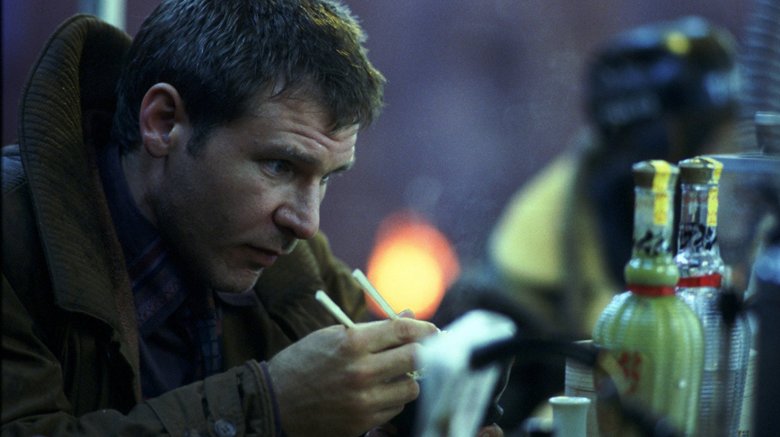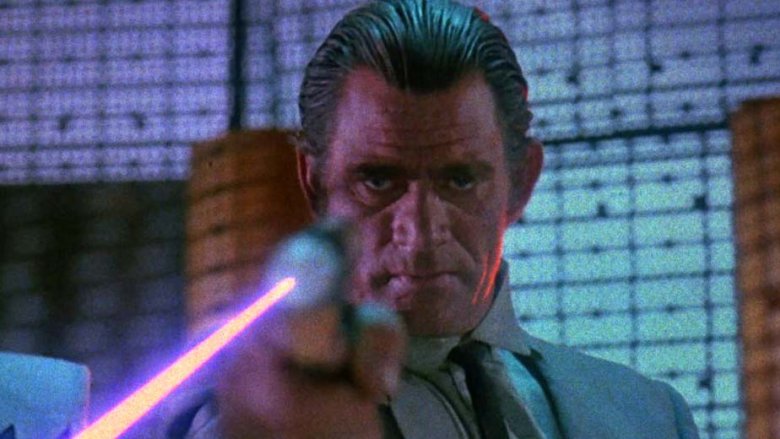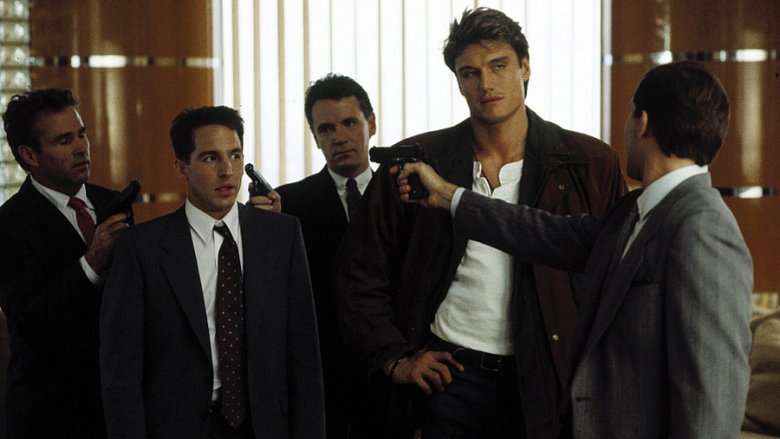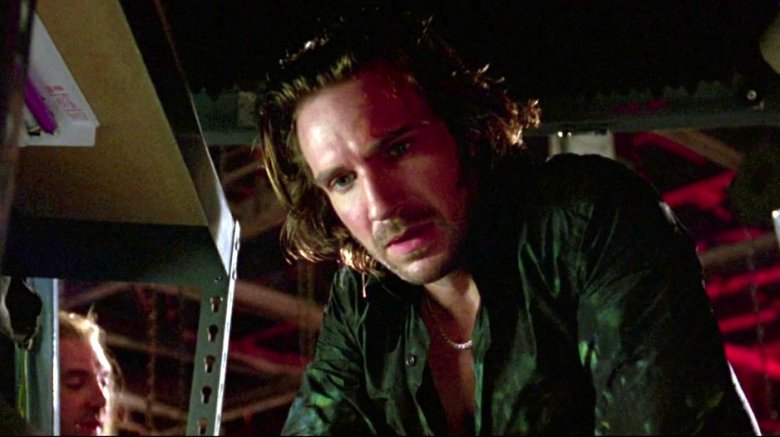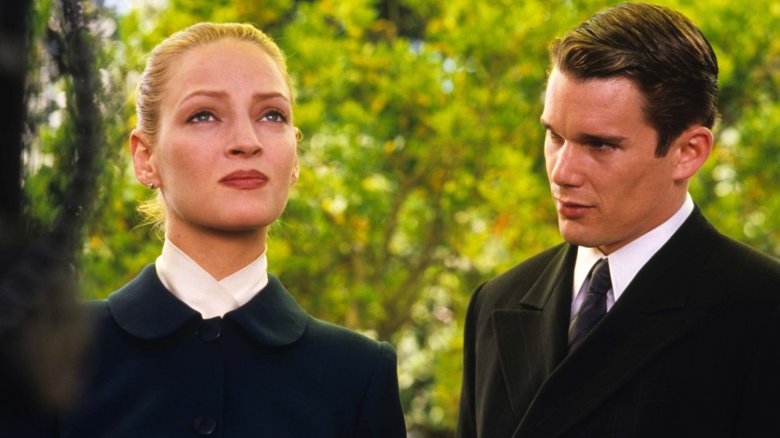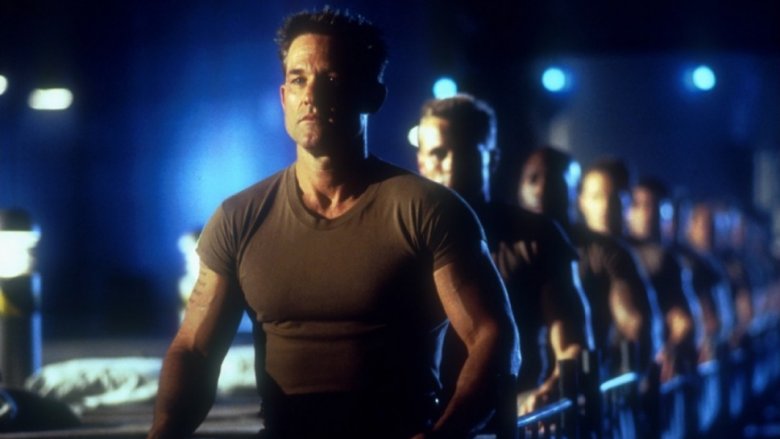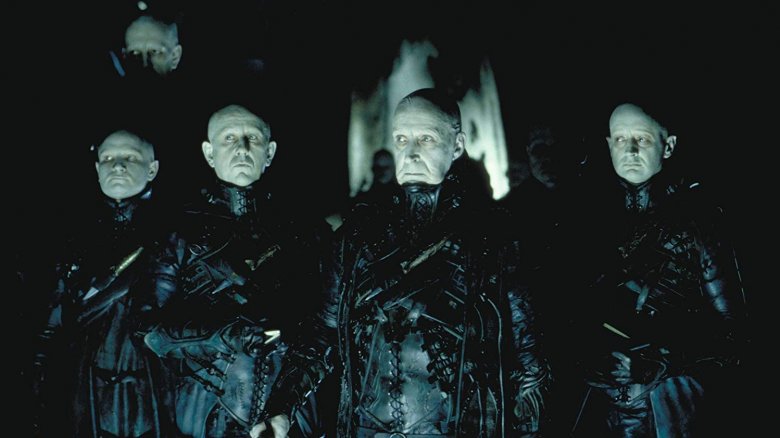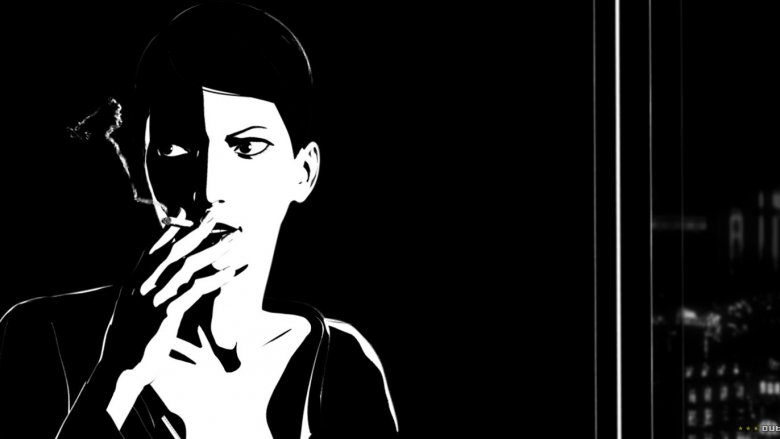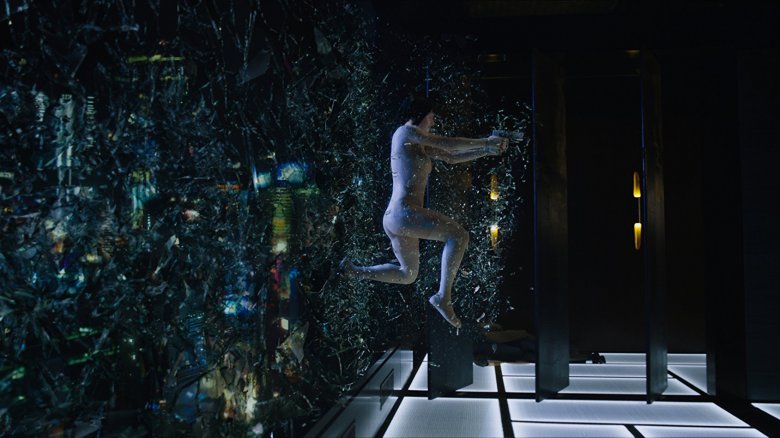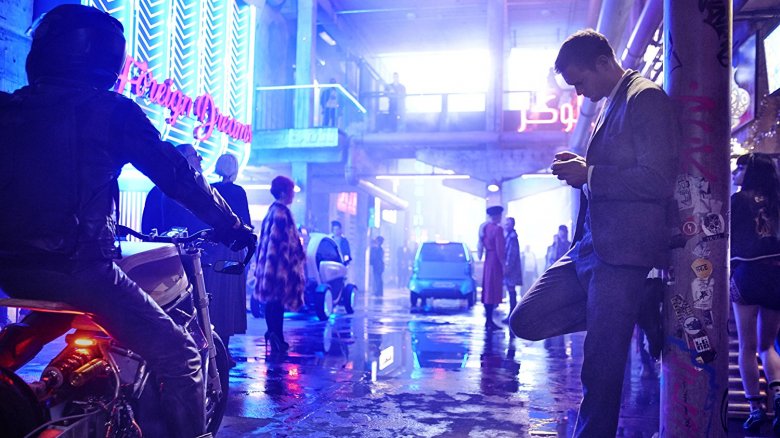Movies That Totally Ripped Off Blade Runner
One rhetorical question — posed as the title of Philip K. Dick's 1968 novel Do Androids Dream of Electric Sheep? — led to the birth of one of fiction's most notable creations. Dick is regarded a pioneer of cyberpunk, a subgenre of science fiction. Typically, cyberpunk stories are set in dystopian futures, where humanity is oppressed by the rising power of new technology, artificial intelligence, or faceless corporations.
Ridley Scott (with help from scriptwriters Hampton Fancher and David Peoples) loosely adapted Dick's watershed work for the big screen with 1982's Blade Runner. Scott's vision of 2019 Los Angeles was a triumph for special effects, a stunning backdrop for a universe where humans have created replicants — powerful artificial intelligence — to work off-world. Rick Deckard (Harrison Ford) is a blade runner, tasked with tracking and "retiring" a group of rogue replicants who illegally return to Earth.
By the time its long-awaited sequel Blade Runner 2049 was released in 2017, cyberpunk had been firmly molded by Blade Runner's legacy; countless films copied, or even ripped off, many of its qualities. If Nexus-6 replicants are more human than human, are these films more Blade Runner than Blade Runner? Spoilers ahead.
Trancers (1984)
Charles Band's relatively unknown B-movie is often categorized as a ripoff of Ridley Scott's cyberpunk sensation, with spare parts from The Terminator thrown in for good measure. There are undeniable similarities: Jack Deth (Tim Thomerson), a police trooper from the year 2247, hunts and kills Trancers — humans operating mindlessly under a hypnotic spell, capable of turning violent at any moment.
As a tagline exclaims, Deth is a "cop from the future lost in the present." Time travel is made possible by the aid of a drug, allowing a person's consciousness to travel through spacetime into the body, or vessel, of their ancestors. Deth travels back to 1985, to a post-apocalyptic L.A. renamed Angel City, with philosophical and stylistic elements clearly inspired by Scott's game-changer. Gene Winfield, who designed Deckard's flying police car, revealed the Spinner appears in Trancers. Remember that for trivia night bonus points.
Similarities don't end there. Trancers mix effortlessly with the general population, much like replicants and humans. Deth has a special bracelet to detect his target, acting as his very own Voight-Kampff machine. Such comparisons are flattering; made on a budget estimated at a tiny $400,000, Trancers creates a unique vision at a fraction of the cost. It's undeserving of disappearing into movie archives, like tears in the rain.
I Come in Peace (1990)
What do you get if you dream up a movie about Rick Deckard's older, more athletic brother? Perhaps a character like Detective Jack Caine, a police detective played by action star Dolph Lundgren. As with Trancers, I Come in Peace (originally titled Dark Angel) mixes elements of Blade Runner with The Terminator. Caine and his partner Larry (Brian Benben) track Talec (Matthias Hues), an alien with an imaginative business venture. He injects humans with heroin to extract the ensuing flood of endorphins directly from the brain, then deals the extract to addicts on his home planet.
With his futuristic gadgets, electric blond hair and dismay at being misunderstood, Talec would slot into Roy Batty's group of fugitive replicants. Unlike Batty, Talec is one of Hollywood's underappreciated villains. He was played by Matthias Hues, an East German decathlon champion, martial artist and bodybuilder. "This guy was such a great athlete and you couldn't fake stuff like that, in those days," Lundgren told Den of Geek. "They gave him stunt guys and none of the stunt guys could do it, so he had to do it all himself."
It may not be the last time, either. In 2016, Hues announced on Twitter a team is working on an original concept for a sequel. News has been fairly quiet since, though, with no confirmation if director Craig R. Baxley or Lundgren will return to the Blade Runner-esque world.
Strange Days (1995)
In Kathryn Bigelow's criminally underrated neo-noir Strange Days, audiences experience a momentary break from reality by entering a depraved, simulated world of memory and emotion ... like it's 1999. In futuristic L.A., two days prior to the millennium, Ralph Fiennes is Lenny Nero, a former LAPD cop who now illegally deals recordings that capture immersive, lived-in experiences via a device plugged directly into the cerebral cortex. Naturally, this technology is exploited for a whole host of deviant uses.
Perhaps inspired by Dixie Flatline's saved consciousness in William Gibson's Neuromancer (a concept also explored in Netflix's Altered Carbon), these recordings can be played back and experienced at a later date. While immersed in a recording, Nero stumbles across the gruesome assault and murder of a prostitute. What unravels is a dark exploration of challenging themes, including racism, voyeurism, rape and murder.
Rain-covered streets and futuristic L.A. aside, there's one significant similarity between Strange Days and Blade Runner — the respective leads. "Lenny and Deckard could almost be neighbors," Deborah Jermyn writes in The Cinema of Kathryn Bigelow. "One an ex-cop, one semi-retired from LAPD; both holed up in the same city; both caught up in detective stories which will make them question what they see and what they remember." Unfortunately, Strange Days is remembered as a box office flop, making just $8 million against its $42 million budget.
Gattaca (1997)
In 2017, the first known attempt at modifying the DNA of human embryos took place in the United States. Its aim: to find a successful way to erase the genes responsible for genetic illnesses.
Any ensuing moral arguments will likely reference Gattaca, director Andrew Niccol's 1997 debut feature. Doing what science fiction does best, Niccol paints a vivid and disturbingly feasible future where genetic engineering is commonplace. Cherry-picking the best DNA from both parents, society is powered by neo-eugenics. A bio-engineering program creates a super-race, known as Valids, while humans conceived naturally are referred to as In-Valids. Protagonist Vincent Freeman (Ethan Hawke) is the latter — but he passes himself off as a Valid.
His deception doesn't last long, though. What unravels is a thought-provoking exploration of the potential outcome of embryonic editing, with blatant discrimination the norm. It's so thought-provoking, NASA named Gattaca the number one most plausible sci-fi movie of all time while noting that Blade Runner is becoming increasingly plausible. The intricacies of societal tension between replicants and humans clearly inspired Gattaca's genetically influenced inequality.
Soldier (1998)
Many films have taken artistic license to draw inspiration from Blade Runner. Soldier is different. It is, as screenwriter David Peoples refers to it, a "side-quel," fitting because Peoples co-wrote Blade Runner with Hampton Fancher. The mind behind the movie adaptation of Philip K. Dick's novel earned the right to create this 1998 spiritual successor, starring Kurt Russell as Sgt. Todd 3465.
There's no obvious link in terms of plot, but Peoples has confirmed he envisioned Soldier in the same universe as Blade Runner, and as with Trancers, Soldier's clearest link is a fleeting glimpse of a Spinner in a scrapyard. This isn't the only cool reference to the wider universe: Tannhauser Gate, name-dropped in Roy Batty's monologue, is mentioned.
Like Gattaca, Soldier tackles talking points around the nature of humanity via bio-engineering, not replicants. Orphaned infants are cruelly adopted by Project Adam, designed to churn out genetically enhanced, order-obeying soldiers. Unlike Gattaca, the film was poorly received by critics and flopped at the box office, earning a paltry $14.6 million against its $60 million budget.
Dark City (1998)
The late Roger Ebert named Alex Proyas' Dark City his favorite film of 1998. "Not a story so much as an experience," he wrote. "It is a triumph of art direction, set design, cinematography, special effects — and imagination." It's easy to see why Ebert was so impressed. Yes, it's an homage to Blade Runner and arguably wouldn't exist without it. But its also a wild, psychotic somersault into the abyss, a nightmarish concoction of paranoia and prophecy.
The film opens with John Murdoch (Rufus Sewell) suddenly awakening in a hotel bathtub, with no recollection of who he is or how he got there. To make matters worse, a murdered corpse lies nearby, next to the apparent murder weapon. He receives a phone call warning him he's being tracked down, and is urged to leave the room immediately. As Murdoch investigates his past, he's also led to question the entire fabric of reality when he discovers he has psychokinetic powers — think Inception and The Matrix rolled into one.
Murdoch is the funnel in which the true nature of the fictional narrative lies. Dark City is overseen by Strangers, an alien race who arrived on Earth after escaping their own decaying planet. They implant false memories in humans to study the response, a cunning role reversal of Tyrell Corporation's experimental approach to AI consciousness that leads to an unreliable narrator who echoes the enduring "human or replicant" debate.
Renaissance (2006)
Imagine Blade Runner, set in a futuristic Paris that looks like Sin City, and you have Christian Volckman's Renaissance. Just as Scott pushed special effects in 1982, Volckman and his creative team fully utilized cutting edge technology. Actors' movements were recorded using motion capture before the shots were animated in 3D, then rendered in black and white. The result was animation "staged exactly like a live-action film," Volckman told Animation World. "Our visual references had more to do with '40s and '50s film noir than with animation."
In this Orwellian world, surveillance is commonplace as the tentacles of Avalon Corp. stretch into all corners of society. When one of their scientists is kidnapped, Barthélémy Karas (voiced by Daniel Craig in the English language version) is hired to find her. His investigation stretches back to 2006 and uncovers genetic research that has the potential to transform humanity. The familiar storyline and cliched character archetypes almost don't matter, though, as the aesthetic, not the adventure, is in the limelight.
Volckman admitted the visuals came first. With future noir and a blank canvas to work with, the next logical step was a Blade Runner-inspired backdrop. "I wanted to work with a city," the director told IGN. "Create huge buildings, create new worlds — and make it something amazing." As far as looks go, at least, this was accomplished. Unfortunately, reviews were tepid and it earned only $1.8 million at the box office.
Ghost in the Shell (2017)
Blade Runner triggered a new series of inspired works, with 1995's Japanese animation Ghost in the Shell being one of the most notable. "Ultimately, all movies begin as copies of others," director Mamoru Oshii told the Los Angeles Times. "Any film set in a near-future world is influenced to some degree by Blade Runner, but I did my best to make [Ghost] different from it."
Similarities aside, Oshii's adaptation of the popular manga series was a defining moment for cyberpunk. All the hallmarks of Blade Runner are there: artificial intelligence driven to existential crisis; a bleak prophecy of how technology can shape humanity. A literal copy, adapted in live action, arrived in 2017, and the production was peppered with controversy when the studio was accused of whitewashing by casting Scarlett Johansson as the cybernetically enhanced Major Mira Killian.
Oshii's adaptation earned its reputation as a classic. Unfortunately, Rupert Sanders' live-action version failed to capture audiences' imagination, evidenced by its underwhelming take of $169.8 million worldwide. Even the dark streets of New Port City leave no hiding space from the glaring similarities to Blade Runner.
Mute (2018)
Duncan Jones is unquestionably talented. His debut feature, Moon, is one of the finest science fiction movies of its generation. With his next release, Source Code, Jones hit the sweet spot of mainstream entertainment and scientific realism, basing its portrayal of parallel universes on plausible quantum physics. Avid sci-fi fans were rightly excited with the prospect of Mute, Jones' passion project, the "spiritual sequel" to Moon and an homage to Blade Runner rolled into one.
Set in futuristic Berlin, Mute's title refers to its protagonist, Leo (Alexander Skarsgård), who is unable to speak after a childhood accident. The film's plot revolves around Leo's investigation into the sudden disappearance of his girlfriend, Naadirah (Seyneb Saleh). As he prowls the German capital, the correlations to Blade Runner are clear, visually and narratively.
With all these ingredients, few would've expected the critical drubbing the movie took, including Jones himself. "I really, truly don't believe it was due," he told The Big Issue, believing critics "have missed something big." Granted, some of Mute's elements are generic, but it's worth remembering Blade Runner wasn't well received initially, and was "misunderstood" by critics. Could it be, like Scott's masterpiece, the world wasn't ready for Mute? Only the future will tell.
